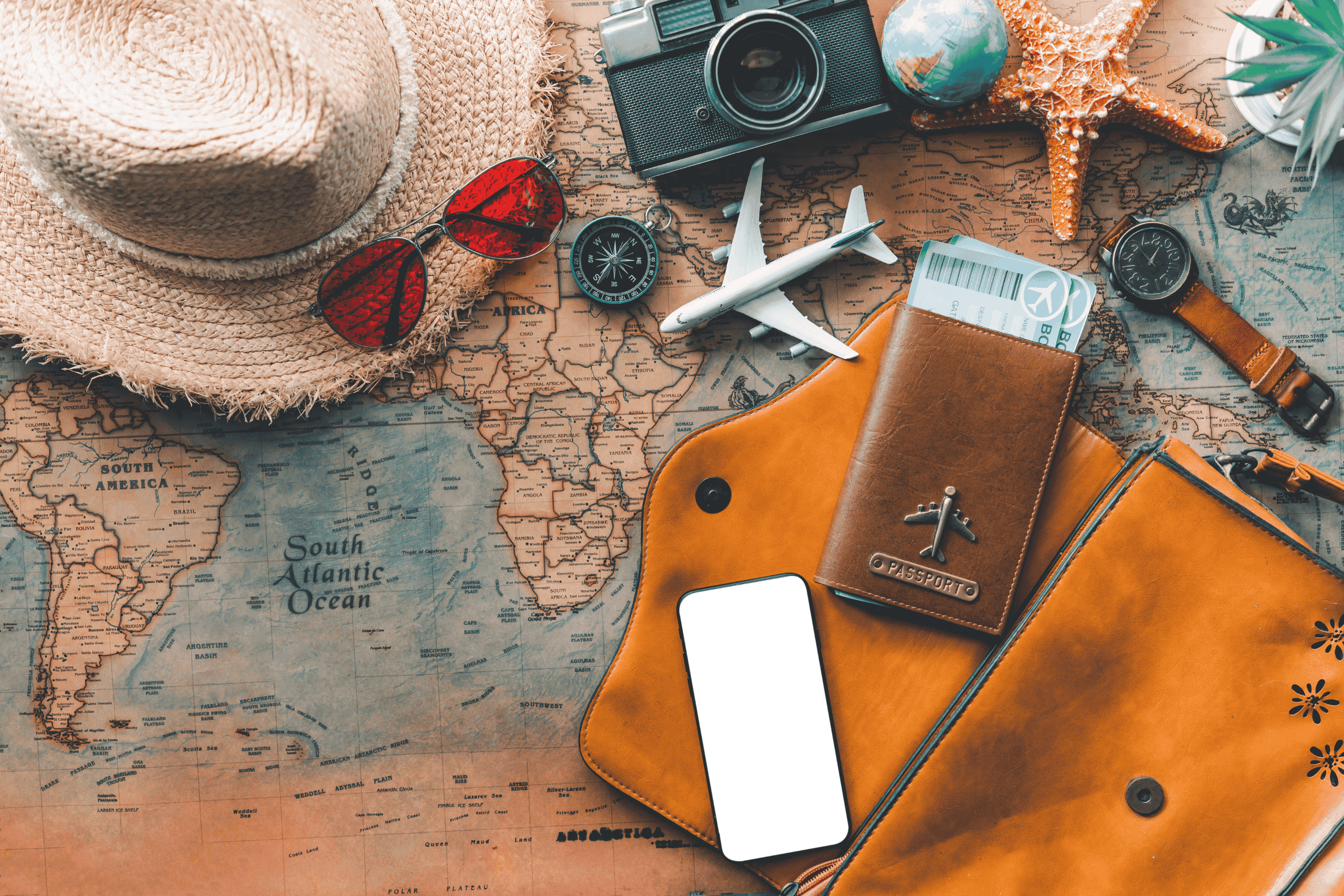
How to Create a Travel Budget and Stick to It
Last year, I was at a friend’s wedding, catching up with an old friend who happened to be a financial planner. Our conversation moved to the topic of travel, and he shared a story about a client who had always dreamed of exploring Europe but never had the money to make it happen. One day, she decided to try something different: she created a dedicated travel budget, with specific savings goals and spending categories. She planned out her trip in detail, accommodations, meals, excursions and gave every dollar a purpose.
His client’s story got my attention and I asked him how she managed to actually stick to that budget, and he explained that she started thinking of every expense as a step closer to her dream vacation. She became much more disciplined with her everyday spending, knowing that small changes could help her get to her goal faster. This idea of a “travel budget” resonated with me, as I’d often taken trips only to overspend halfway through, leaving me stressed and scrambling by the end.
Inspired by this story, I decided to try creating a travel budget for myself the next time I planned a trip. I followed his advice: I mapped out everything, from flights and accommodation to daily meals and activities, setting limits for each category. It felt a bit restrictive at first, but once I started, I found it surprisingly freeing. Sticking to my travel budget helped me enjoy each part of the trip without worrying about running out of funds halfway through.
If you’re planning a trip and want to make it memorable without financial stress, setting up a travel budget can make all the difference. Just like my friend’s client, you can make your travel dreams happen one budgeted dollar at a time.
Step 1: Set Your Total Travel Budget
Start by determining how much you’re willing and able to spend on the trip overall, factoring in your financial situation and future goals. According to CNBC, 55% of Americans accumulate credit card debt during vacations due to lack of planning. Here’s how you can avoid this common pitfall:
- Review Your Finances: Take stock of your savings and decide on an amount that won’t strain your budget. Think about the long-term impact of your travel spending.
- Estimate Destination Costs: Some destinations are pricier than others, so research average daily expenses for food, lodging, and activities.
- Set a Realistic Budget: Avoid the temptation to overspend by budgeting within your means and leaving a buffer for unexpected costs.
Step 2: Break Down Your Expenses by Category
Once you have a total amount, divide it into specific categories to clarify where each dollar will go. Typical travel categories include:
- Accommodation: Whether it’s a hotel, Airbnb, or hostel, set a daily or total lodging budget.
- Transportation: Account for flights, trains, car rentals, and public transportation.
- Food: Set separate budgets for dining out, groceries, and snacks.
- Activities: Include tours, entrance fees, and souvenirs.
- Emergency Fund: Allocate a portion (around 10-15%) for unforeseen expenses like medical issues, delays, or lost items.
Breaking down your expenses helps you spot areas where you may be overspending. Financial consultant Andrea Woroch suggests this method as it makes adjusting for unexpected expenses easier and encourages you to cut back if needed.
Search and Plan Ahead
Planning can significantly reduce your costs. Not only does early booking give you access to cheaper flights and accommodations, but it also lets you avoid last-minute price hikes.
- Book in Advance: Airfare Watchdog reports that booking flights and accommodations at least two to three months in advance can save you up to 20% .
- Using BudgetApps like Hopper (for flights) or Skyscanner can help you track and find deals. Tools like Google Flights allow you to set alerts, so you know when prices drop.
Step 4: Create a Daily Budget
Instead of managing your whole trip budget at once, try setting a daily spending limit. For instance, if you’re traveling for seven days with a budget of $1,000, aim to spend around $143 each day. According to Forbes, travelers who set daily budgets tend to spend 30% less, preventing small purchases from adding up.
Step 5: Track Your Spending During the Trip
Even with a well-planned budget, tracking expenses while you travel keeps you on course.
- Use Expense-Tracking Apps: Apps like Trail Wallet or Spendee are made for travelers, helping you monitor each dollar.
- Carry Cash: Allocate a fixed amount of cash per day to make spending more tangible, and avoid relying on your card.
- Check-In Daily: Spend a few minutes each evening reviewing your expenses and making adjustments. This practice can prevent going over your daily or category limits.
Step 6: Find Budget-Friendly Alternatives
While traveling, be open to exploring cost-effective options. Here are some ways to save:
- Food: Instead of eating at restaurants for every meal, try visiting local food markets or preparing simple meals in your accommodation.
- Lodging: Consider budget-friendly options like hostels, Airbnb, or homestays. Staying outside main tourist areas can save significantly.
- Transportation: Walking or using public transport instead of renting a car not only cuts costs but offers a better local experience.
Travel expert Rick Steves recommends embracing local culture and avoiding tourist-heavy spots for food and lodging to save money.
Step 7: Have an Emergency Fund
Unforeseen expenses are almost inevitable, so setting aside an emergency fund (around 10-15% of your total budget) is crucial. According to Harvard Business Review, having a financial buffer helps reduce stress and lets you enjoy the journey with peace of mind.
Step 8: Practical Tips to Stick to Your Budget
Sticking to your budget can be challenging, but here are a few tricks to help:
- Avoid Impulse Buys: If something catches your eye, wait a day before purchasing. This pause often curbs unnecessary spending.
- Stay Focused on Your Budget Goals: Remind yourself that every dollar saved can go toward future experiences or another trip.
- Accountability Partner: If you’re traveling with friends or family, keep each other accountable to stay within budge
Conclusion
Creating and sticking to a travel budget can make your trip not only enjoyable but also financially responsible. By planning ahead, using budgeting tools, and being mindful of your spending, you can have memorable experiences without any financial regret. Traveling should be about freedom and enjoyment, not worrying about debt upon your return. So, as you plan your next journey, use these tips to make budgeting a part of the adventure.
References:
- CNBC, “Why Americans Overspend on Vacations,” 2023.
- Financial Consultant Andrea Woroch’s Budgeting Advice, 2022.
- Airfare Watchdog, “The Benefits of Booking Early,” 2023.
- Forbes, “How Daily Budgets Save Travelers Money,” 2023.
- Rick Steves, “Saving Money While Traveling,” 2023.
- Harvard Business Review, “The Importance of a Financial Buffer in Travel,” 2022.










